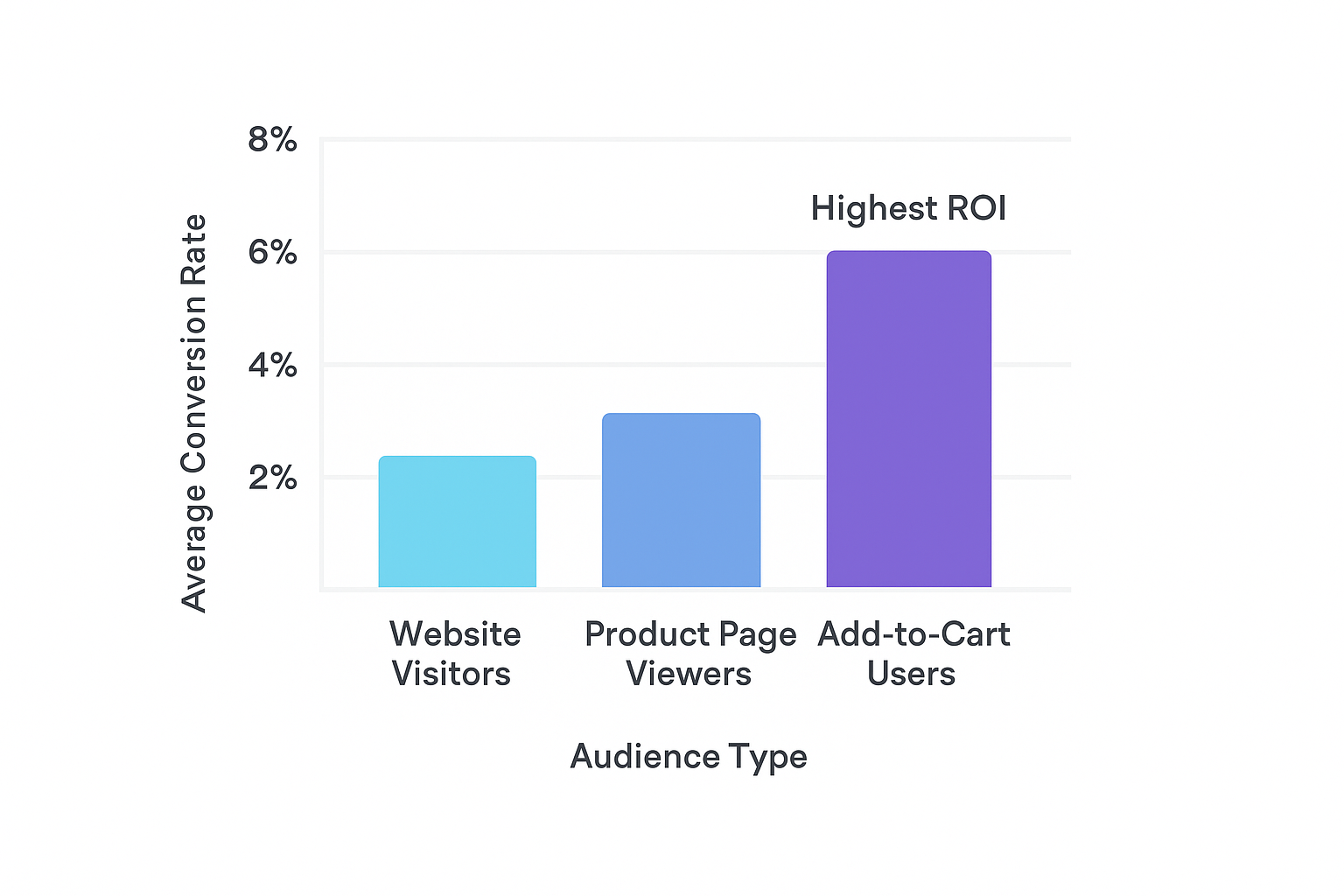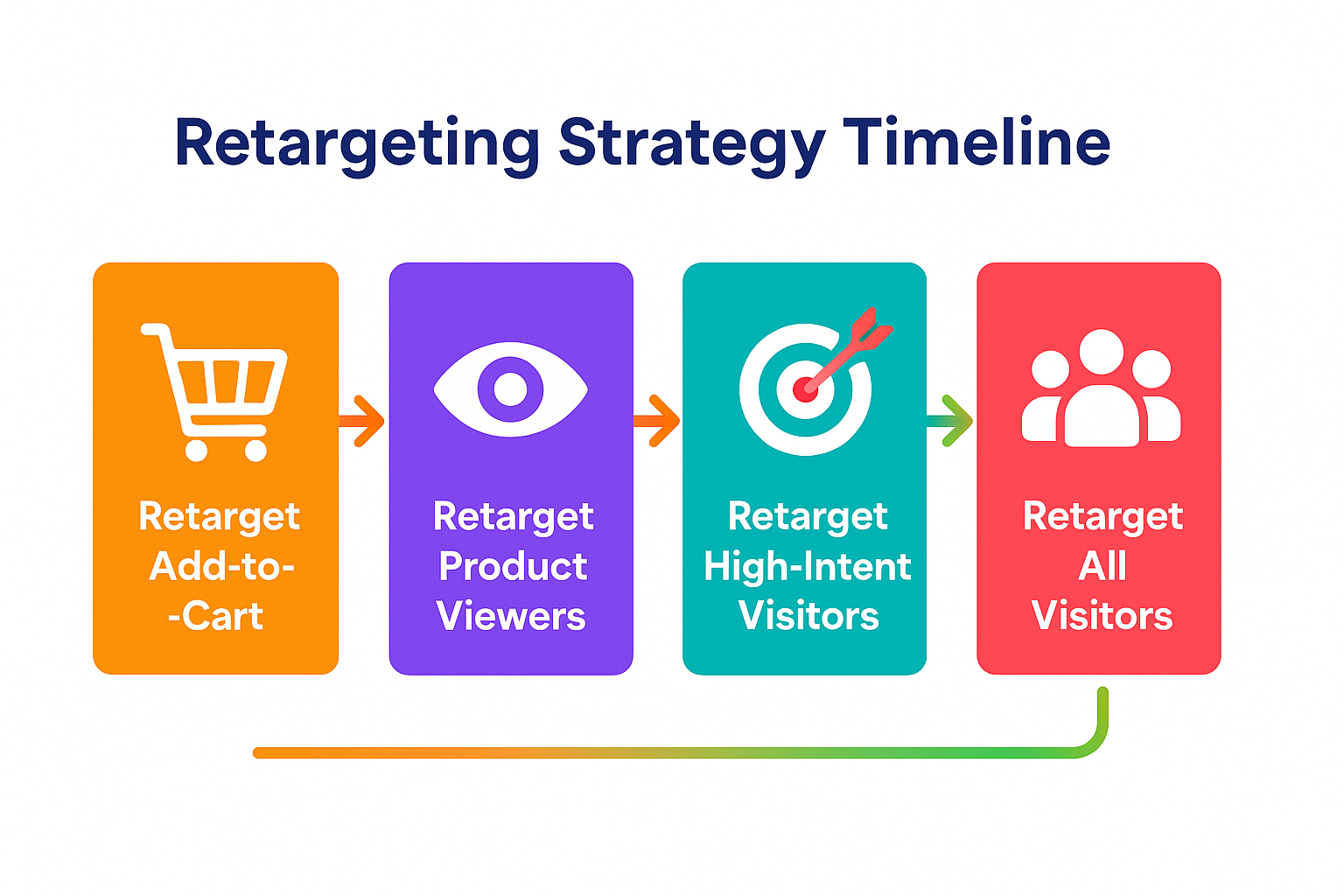When you're running Facebook ads, deciding who to retarget first can have a major impact on your results. Your budget isn’t endless. So where do you focus — people who visited your site, or those who added something to the cart but didn’t buy?
Let’s break it down in a way that actually helps you make the call.
What’s the Difference Between These Audiences?
Not all visitors are equal. Some skim your homepage and bounce. Others explore your products, compare options, and even begin checkout.

-
Website visitors include everyone who lands on your site — whether from an ad, organic search, or social post.
-
Add-to-cart users are a subset. These people took action. They were one step from buying, but stopped short.
That single click to add a product shows much stronger intent than simply visiting a page.
Why Add-to-Cart Users Are Usually the Best Starting Point
Let’s be practical. If someone added something to their cart and left, they didn’t need convincing — they needed reassurance, clarity, or a reminder.
Retargeting these users often delivers the highest ROI. You’re reaching warm leads who just need a nudge.
Here’s how to do it well:
-
Use dynamic product ads that show the exact items they abandoned.
-
Layer in urgency — limited-time discounts, stock warnings, or deadline-based free shipping.
-
Keep the creative simple and focused. You're reminding, not re-pitching.
This audience is small, but the conversion potential is high. If your ad budget is tight, this is where you start.
You can also review this detailed guide on how to set up Facebook retargeting to ensure your campaign is properly structured.
What About Website Visitors?
Retargeting all website visitors casts a wider net. It’s ideal when you’re building awareness, running mid-funnel content, or testing offers.
But it’s not as straightforward.
Website visitors include:
-
People who landed on your blog;
-
One-time visitors who bounced fast;
-
Curious browsers who looked but didn’t click much.
You’ll want to break them into smaller segments. Prioritize:
-
Visitors who stayed longer than 30 seconds;
-
People who visited product or pricing pages;
-
Repeat visitors across multiple days.
This is a great way to re-engage interest — especially if you pair it with educational content, testimonials, or best-selling products.
For more clarity on choosing audience types, Retargeting vs. Broad Targeting dives deeper into how intent and audience structure affect campaign outcomes.
Which Audience Should You Start With?
If you're after conversions, retarget add-to-cart users first. They're closer to purchase, and a well-timed ad could close the deal.
If you're still trying to nurture traffic, retarget segmented website visitors. But don’t lump everyone together. Treat their behavior as signals — and tailor your messaging accordingly.

Here’s a helpful flow to consider:
-
Start with add-to-cart retargeting;
-
Add product page viewers;
-
Expand to high-engagement site visitors;
-
Only then test broader site-wide retargeting.
When doing this, remember: Meta’s delivery system won’t always behave the way you expect. Learn how to navigate issues like the “Ad Set May Get Zero” warning — especially if your audience gets too narrow.
Other Factors That Matter
Retargeting isn’t just about the audience. Timing, frequency, and creative play huge roles too.
-
Show ads to cart abandoners within 1–3 days of their last visit.
-
Keep frequency reasonable — 1 to 2 ads a day is often enough.
-
Use fresh creatives if your audience is small to avoid ad fatigue.
Still seeing lagging results? Your broader retargeting strategy may need adjustment. Explore how to bring back abandoned leads without annoying them for more nuanced tactics.
Final Thought: Prioritize Based on Intent
You don’t have to choose one group forever — but you do need to sequence smartly.
Start with high-intent audiences. Track what works. Scale what converts. Then move up the funnel as your budget and strategy grow.

